Are you struggling to attract the right customers to your business? Without effective lead generation, even the best products and services can go unnoticed, causing your business to fall behind the competitors.
In this post, we’ll go through common challenges in finding quality leads and explore how lead generation can be the game-changer your business needs.
We’ll cover the key strategies that help you connect with potential customers, nurture their interest, and ultimately boost your sales pipeline.
But before we dive in, let’s clarify what lead generation actually is and why you should invest significant resources in it.
What is lead generation?
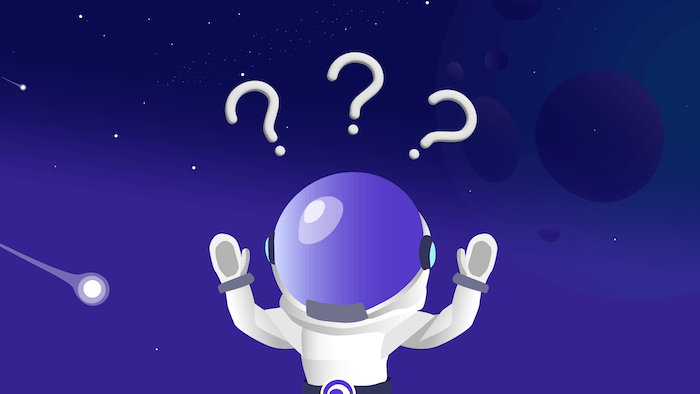
Okay, let’s talk about what lead generation actually is. You’ve probably heard the term thrown around in marketing meetings or maybe even whispered over coffee at the office water cooler or on LinkedIn.
But what is it really?
Lead generation is like that friend who always knows the best restaurants before anyone else—except instead of finding food, it’s about finding potential customers. It’s about sparking interest in your products or services through content marketing, making them curious enough to provide you with their contact details, and then nurturing them until they are ready to buy.
Lead generation is the process of attracting and capturing interest from potential customers with the goal of converting them into buyers. It involves various strategies and tactics, such as content marketing, social media engagement, email campaigns, ads, and SEO, to attract people who are likely interested in a company’s products or services.
Once the interest is captured, typically through contact information like an email address or phone number, potential customers—called leads—are nurtured through follow-up communication until they are ready to make a purchase.
Lead generation is a crucial part of the sales and marketing funnel that helps businesses continuously find new customers and drive revenue growth.
Sounds pretty easy, right? Sometimes it is, and other times it’s like herding a bunch of wild cats.
I remember when I first started diving into lead generation. I was eager, full of energy, and, to be honest, a bit clueless. I thought, “How hard can it be to get people interested in something I think is cool?”
Spoiler: It’s harder than it looks and than seasoned marketers make it sound. But here’s the point—once you start to figure it out, it’s like magic. Suddenly, you’re not just doing marketing; you’re having conversations, building relationships, and slowly but surely turning strangers into customers.
And hey, it’s not about being pushy or spammy (no one likes that). It’s about understanding what people need and showing them, “Hey, we’ve got exactly what you’re looking for.” It’s like being a matchmaker for products and people—a little data, a touch of creativity, and a lot of patience.
What is a lead?
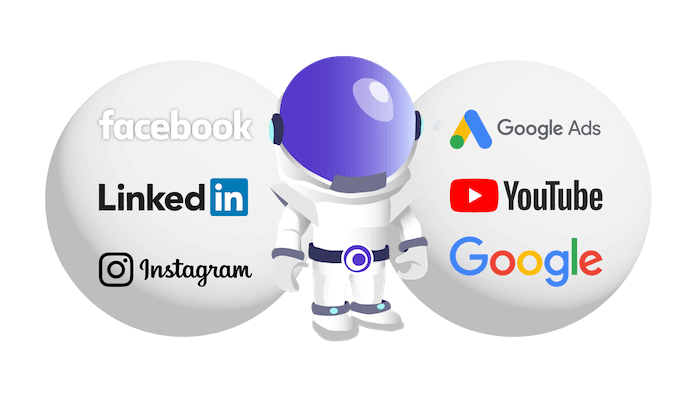
So, what exactly is a lead? If you’re imagining a mythical creature that magically appears ready to buy everything you’re selling, I’m sorry to say—working with leads is a bit more complicated than that.
A lead is essentially anyone who shows interest in what your business offers. They might have clicked on a link, filled out a form, or even signed up for your newsletter. They’re not fully-fledged customers yet, but they’re on the radar, and that’s a big deal.
So, what is a lead? It’s not just a number on a spreadsheet. It’s a potential relationship waiting to be built. It’s an opportunity to solve someone’s problem, make their life a little easier, or their business a bit better. With the right approach, today’s lead could be tomorrow’s loyal customer.
To put it simply, a lead is a person or business that has shown interest in your product or service. They have engaged in some way, given their contact details, or interacted with your brand, indicating that they are a potential customer. Lead generation is the process of attracting these potential buyers, collecting their information, and nurturing them towards a purchase. It’s about turning curiosity into engagement.
Imagine you’re hosting a party. People show up, but some are just peeking in to see what’s going on. Those peekers—they are your leads. They’re curious, but they’re not ready to dance yet.
Your job is to make the atmosphere so inviting (and your snacks so irresistible) that they can’t help but join the party. But remember, not all leads are created equal. Some are warm and ready to dive in; others are a bit shyer and need more convincing.
Leads need nurturing. You can’t just shove your product in their face and expect them to bite. It’s about understanding their needs, building trust, and showing them why your solution is the one they’ve been looking for. How your product or service can solve their problems.
What is the purpose of lead generation?
Why even bother with lead generation? You’ve got a great product, a super sleek website, and maybe even some killer posts on social media.
Shouldn’t customers just flock to you? Well, in a perfect world. But in reality, lead generation is your tool to turn fleeting glances into actual invitations inside. It’s the bridge between casual interest and that moment when a potential customer, a lead, finally says, “Yes, I want what you’re selling.”
Think of lead generation as the foundation of your sales process. Without it, you’re just throwing darts in the dark and hoping something sticks. Or cold canvassing, as it’s called.
With lead generation, you shine a spotlight on the right people—the ones who are actually interested in what you’re doing—or could be. And it’s not just about collecting emails or phone numbers; it’s about creating a pipeline of potential customers who are ready to hear your message.
I remember that when I started, the concept of lead generation felt like one of those things everyone talked about but no one really explained. But the more I delved into it, the more it made sense: It’s not just about filling a contact list or a board in a CRM system. It’s about building relationships, one step at a time.
It’s also not about finding the most people you can add to the Excel sheet of leads. It’s about filling that list with the right people.
So why do we do lead generation? The purpose is simple: to find and attract potential customers, nurture them, and guide them towards becoming paying customers. It’s the strategic process that ensures your marketing efforts aren’t just noise, but targeted, effective, and, most importantly, fruitful. Lead generation is about making sure that when someone is ready to buy, you’re not just an option—you’re the obvious choice.
How to get more leads?
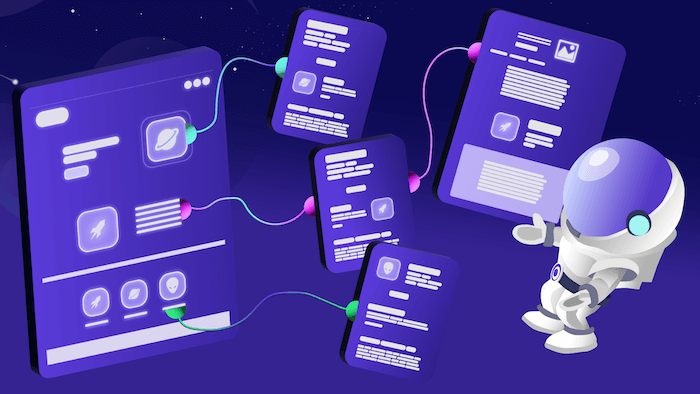
There isn’t a one-size-fits-all answer to how to get more leads. The options are many, and one approach works perfectly for one type of business, while another finds success with a completely different method.
Therefore, here are a variety of methods and tools you can use to capture more leads and fill up your CRM.
SEO/Landing Pages
SEO helps your business rank higher in search engine results when people search for relevant keywords. To get more leads through SEO, focus on optimizing your website with targeted keywords, quality content, good SEO content, and a fast, mobile-friendly user experience. Leads are an important part of both B2B and B2C, and SEO for e-commerce is also a key channel for collecting more B2C leads.
Your landing pages are crucial in this process—they are specific pages on your website designed to collect visitor information through a clear call to action, like filling out a form.
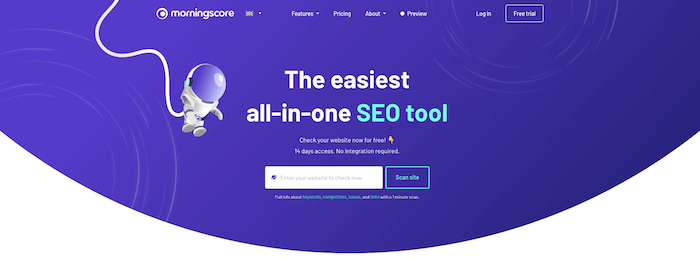
Keep landing pages simple with a strong headline, a brief description, and a clear path for visitors to provide their contact information.
Facebook Lead Ads
Facebook Lead Ads allow you to collect contact information directly from people using Facebook, without them leaving the platform. Lead Ads include forms that automatically fill in the user’s information, making it easy for them to submit.
For the best results, offer something valuable in return, like a discount or access to exclusive content. Keep the forms short and easy to complete, and follow up quickly to maintain the lead’s interest.
LinkedIn Lead Ads
LinkedIn Lead Ads are similar to Facebook Lead Ads but have different advantages in targeting a specific type of person in a specific type of role. LinkedIn Lead Ads also allow users to submit their information directly within LinkedIn, making it convenient and efficient.
They are particularly effective for B2B marketing. Customize your offer to appeal to the target audience, for instance, by offering a business-related resource, and make sure your messaging aligns with professional and work-related needs.
Website Popups
Website popups are small windows that appear on your site to capture visitors’ attention and collect leads. They can be effective when timed well and offering something relevant and valuable, like a newsletter signup or a limited-time offer.
The key to successful popups is to be non-intrusive; set them to appear when the visitor has been on the page for a while and make sure they are easy to close if the visitor isn’t interested.
Like Lead Ads on Facebook and LinkedIn, it’s important to have something to offer that your users are interested in.
Gated Content
Gated content is valuable content that requires the visitor to provide their contact details to access it. This could be in the form of e-books, reports, webinars, or exclusive articles.
To use gated content effectively, ensure that what you offer is highly relevant and provides significant value to your audience. Once you have their contact information, continue to nurture your leads with more useful content and communication that builds on their interest.
Gated content can be used both on your landing pages, as popups, or in your Lead Ads.
What information do you need?
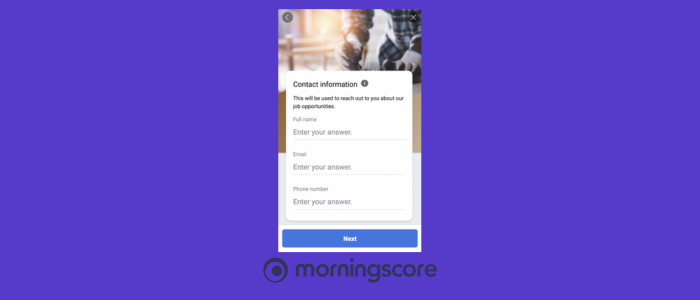
One of the big questions is what information do you need from your leads?
The answer is that it depends on your business, your sales process, your other marketing, etc.
The classic information you’re asked to fill out is name, email, and phone number. Some businesses spice it up a bit and also ask for company name, website, number of employees, your position, and a bunch of other things that the business thinks are relevant.
What you need to remember with your lead forms is never to ask for more information than necessary. For each extra field that needs to be filled out, more and more people drop off and end up never becoming a lead.
You might argue that they wouldn’t have been a good lead if they drop off, but the truth is that people are often reluctant to give away too much information too early in the process.
If you’re gathering leads that go directly to the sales department, which is ready with the phone, you don’t really need to know more than the person’s name and phone number.
However, you would often want to know your leads a little better and might also ask for an email, which you can use to try and decode the company from—but stripped down to the essentials, it’s not absolutely necessary for a salesperson to make a call.
If you’re running lead ads and forms that just send leads into your email flow, then don’t ask for a phone number. It’s not relevant for receiving your emails that you ask for their phone number, and it will be an unnecessary step that just reduces the conversion rate.
For B2C businesses, you often only need the name and email. You don’t typically call B2C customers and therefore don’t need their phone number. If you want more information about your leads afterwards, such as a birthday, age, or similar, you can use your email marketing actively, e.g., send an email asking for their birthday and package it as if you’d like to send a birthday gift when the time comes (e.g., a 10% discount code or something similar).
Types of leads
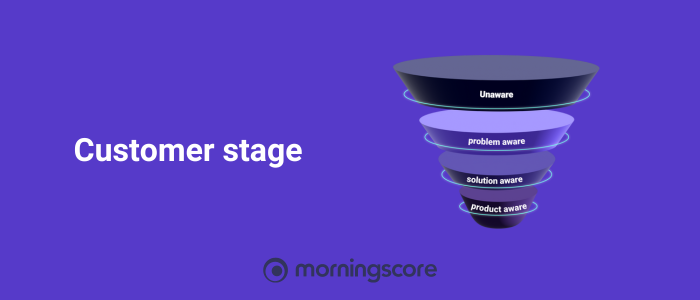
When it comes to lead generation, not all leads are the same. Understanding the different types of leads can help you tailor your approach and ensure you focus your efforts where they are most effective.
Generally, leads are categorized based on their level of interest and readiness to make a purchase. Here are the main types:
- Cold leads: Cold leads are people or businesses that have shown little to no interest in your product or service. They might fit your target audience based on certain criteria, but they haven’t interacted with your brand yet. Reaching out to cold leads often requires initial information and nurturing to warm them up.
- Warm leads: Warm leads are those who have interacted with your brand in some way but are not yet ready to buy. They might have visited your website, downloaded content, or followed you on social media. Warm leads know your brand and have shown some interest, making them more likely to engage further with targeted communication.
- Hot leads: Hot leads are people or businesses ready to make a purchase or take the next step. They have shown a clear intent, such as requesting a quote, signing up for a trial, or contacting your sales team directly. These leads are your top priority because they are most likely to convert into customers quickly.
To assess where your leads are in the process, whether they are worth spending marketing dollars on or if sales should take over, lead scoring and terms like MQL, SQL, PQL, etc., are used.
To simplify things a bit, I’ll stick to explaining MQL and SQL below.
Marketing Qualified Leads (MQLs)
What are MQLs?
Marketing Qualified Leads (MQLs) are leads that have shown a higher likelihood of becoming customers compared to general leads but are not yet ready for a direct sales approach. They have engaged with your marketing efforts—such as filling out a form, downloading an e-book, attending a webinar, or interacting with your emails or social media—indicating interest in your product or service. However, they may still be in the early stages of their buying journey and need more nurturing before making a purchase decision.
How to identify MQLs:
MQLs are identified through specific behaviors that indicate growing interest in your offerings. This could be actions like frequent visits to your website, interactions with your emails, clicking on multiple call-to-action buttons, or consuming content that suggests they are exploring solutions to a problem your product solves. You can set criteria using lead scoring models that assign points to these actions, helping you distinguish MQLs from other leads.
How to handle MQLs:
Since MQLs are still in the information-gathering phase, the focus should be on nurturing them with relevant and valuable content. This could include educational material, case studies, newsletters, or webinar invitations that provide deeper insights into their areas of interest. The goal is to keep them engaged, answer their questions, build trust, and guide them closer to a purchase decision without overwhelming them with direct sales pitches too early.
Sales Qualified Leads (SQLs)
What are SQLs?
Sales Qualified Leads (SQLs) are leads that have been vetted by both marketing and sales teams and are considered ready for direct contact with the sales team. They have moved beyond merely exploring and are actively considering a purchase. SQLs have taken concrete steps that indicate they are closer to making a buying decision, such as requesting a demo, asking for a quote, or reaching out directly for more specific information about your product or service.
How to identify SQLs:
SQLs are identified when leads show clear buying intentions. This can include multiple high-value actions like repeated visits to product pages, downloading pricing information, interacting with chatbots to inquire about purchasing options, or responding positively to MQL nurturing efforts. They have crossed an interest threshold suggesting they are seriously evaluating your solution and may be ready to discuss details like pricing, timelines, or implementation.
How to handle SQLs:
For SQLs, the approach shifts from nurturing to direct engagement. This is where your sales team steps in and provides personalized communication and support that addresses specific needs and concerns. The goal is to help them overcome any final barriers to purchase, such as clarifying product details, discussing customization options, or offering demos that show exactly how your solution meets their requirements. At this stage, responsiveness and tailored solutions are crucial to closing the deal.
Lead generation for B2C and B2B
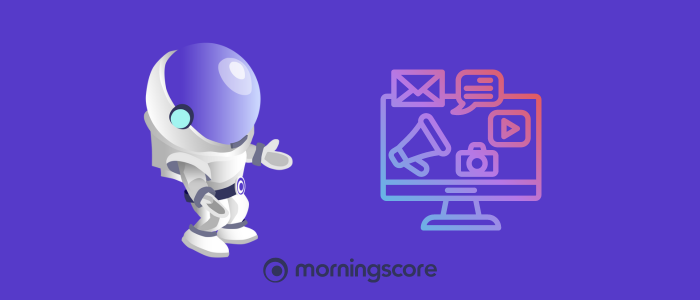
Lead generation is the lifeblood of any business, whether you’re selling directly to consumers (B2C) or targeting other businesses (B2B). While the goal is the same—to find potential customers and convert them into paying customers—the approach varies significantly between B2B and B2C lead generation.
The main differences between B2B and B2C lead generation
- Sales cycle: B2B lead generation has a longer sales cycle, often stretching over months due to the need for research, multiple meetings, and approvals. B2C sales cycles are generally shorter, with decisions often made on the spot or within a few days by one person.
- Decision-making process: B2B decisions are usually made by a group of people and require consensus among them. In contrast, B2C decisions are typically made by a single person, often driven by personal preferences or immediate needs.
- Content and messaging: B2B content needs to focus on providing value, education, and solutions that solve some problems or challenges for the business. Think whitepapers, case studies, and webinars. B2C content is more about storytelling, emotional appeal, and direct benefits, like discounts or lifestyle improvements, often shared through blog posts, videos, or social media.
- Channels: B2B lead generation often relies on Google, LinkedIn, email marketing, and industry-specific platforms where professionals network and research. B2C lead generation uses a broader range of channels like Instagram, Facebook, TikTok, and Google, where consumers browse and shop.
How to work with B2B and B2C lead generation
For B2B lead generation, focus on building relationships and showcasing your expertise. Offer in-depth content like whitepapers, detailed case studies, or webinars that provide valuable insights. Use LinkedIn and email marketing to reach out to individuals in the right roles and nurture your leads with personalized content that addresses their specific challenges.
In B2C, the key is to capture attention quickly. Use eye-catching visuals, clear and concise calls to action, and offer incentives like discounts, extra products, or free trials. Advertising on social media, content marketing, and search engine optimization are your best friends here—channels that reach consumers directly where they spend most of their time.
Tips and tricks for effective lead generation
- Segment your audience: Whether B2B or B2C, segmentation is crucial. For B2B, you can segment by industry, company size, or job title. For B2C, you can use demographics, interests, or buying behavior. Segmentation allows you to tailor your messages and offers, increasing your chances of conversion.
- Leverage data: Data-driven decisions can refine your marketing to generate leads. Track and analyze your campaigns regularly to see what works and what doesn’t, then adjust your strategy and spend your marketing dollars effectively.
- Optimize your landing pages: Whether it’s a B2B landing page offering a demo or a B2C page selling a great deal, make sure it’s optimized for conversions. That means clear headlines, concise text, a clear call to action, and forms that are easy to fill out. For B2B, include elements like testimonials or reviews to build credibility and social proof.
- Use social proof: For B2B, highlight case studies, testimonials, and data that show others’ success with similar challenges using your product. In B2C, showcase reviews, user-generated content from social media, or influencer endorsements to quickly build trust.
How to measure your leads?
Measuring your leads and their value is actually quite simple compared to tracking many other things, because it is quite tangible and the data is your own.
To assess the effectiveness of your lead generation and the quality of your leads, you can measure:
- Number of leads to measure the impact of your marketing
- Number of leads that move from MQL to SQL to measure lead quality depending on whether they progress in the funnel
- Number of SQLs that become customers to evaluate your sales team’s efforts or revise the requirements for becoming an SQL
- Customer lifetime value to measure how much a lead is worth on average and thus how much a lead can cost
Frequently Asked Questions
What is lead scoring, and why is it important?
Lead scoring assigns points to leads based on their actions and interactions, helping you prioritize the most promising leads. It’s important because it ensures that your sales team focuses on the leads most likely to convert, making your efforts more effective.
How important is content in lead generation?
Content is crucial for lead generation as it helps attract, engage, and educate your audience. High-quality content establishes your authority, builds trust, and provides value, making it more likely that visitors convert into leads. Content is what gets potential leads to become leads.
What are PQLs (Product Qualified Leads)?
Product Qualified Leads (PQLs) are leads that have used/tried your product independently, often through a free trial, a freemium version, or a limited access offer, and have shown interest or engagement that suggests they are likely to become paying customers. PQLs have already interacted with your product and demonstrated that they find value in it, making them more qualified and closer to conversion than typical leads.
How do I nurture my lead once it comes in?
Nurturing a lead is about building a relationship through consistent, personalized communication that guides them through the buyer’s journey. Start by segmenting your leads based on their behavior and interests. Use email marketing to send targeted content that addresses their specific needs or challenges, such as informative articles, case studies, or product demos. Engage with them across multiple channels, like social media, personalized follow-ups, and retargeting ads.
It’s also important to respond quickly to any inquiries and provide value in every interaction without being overly sales-focused. The goal is to educate, build trust, and keep your brand top-of-mind until the lead is ready to make a buying decision.

